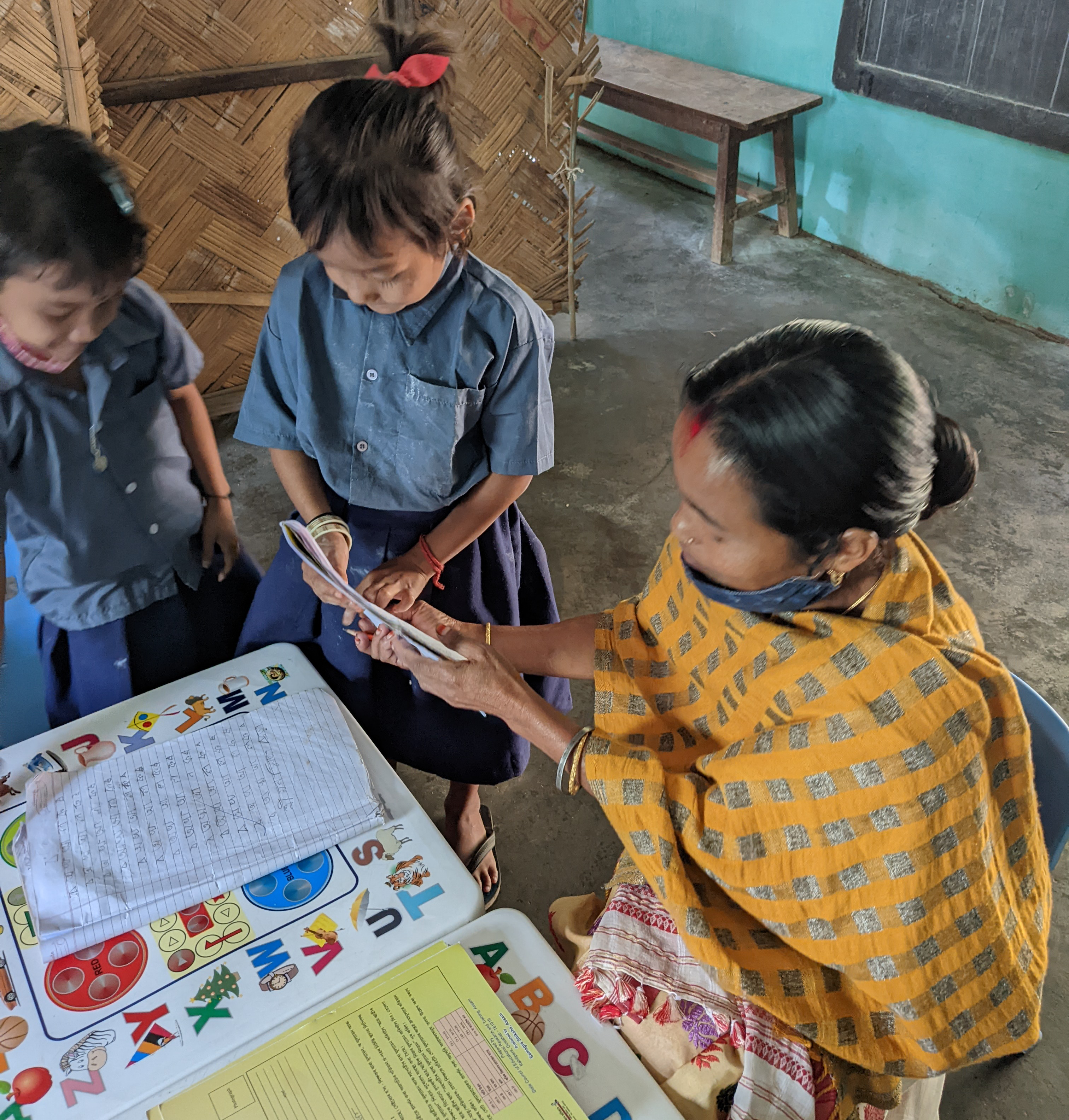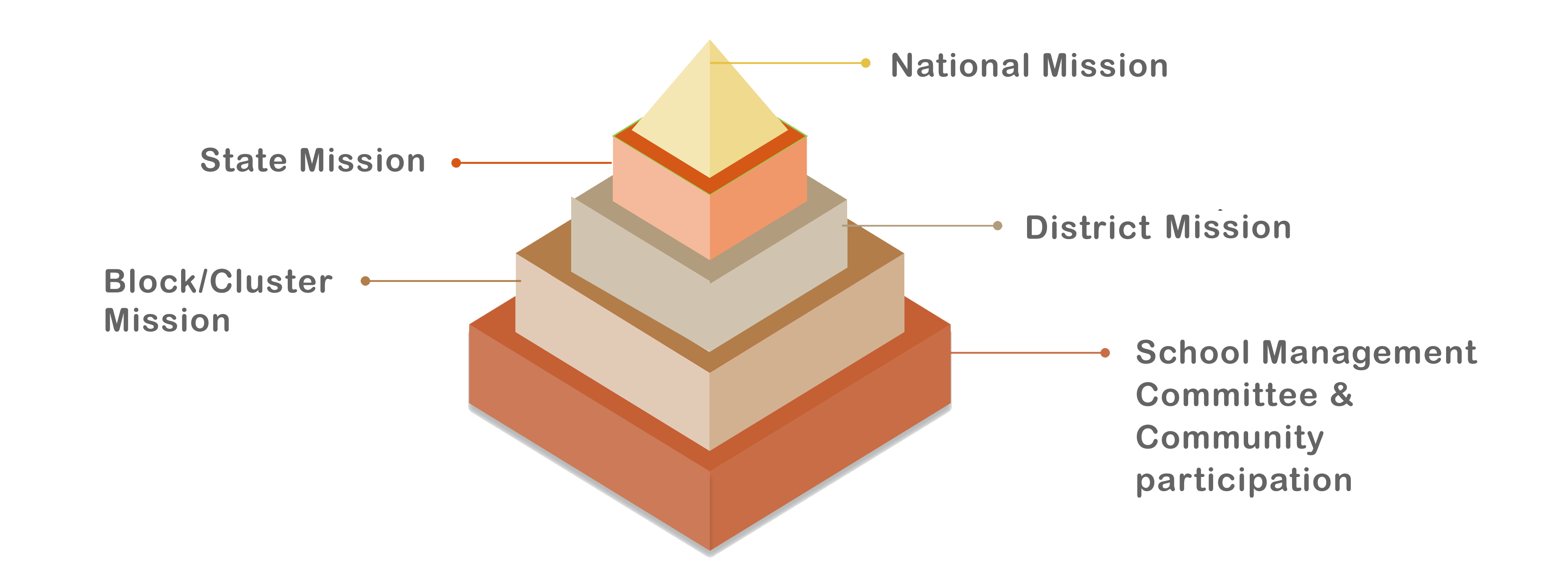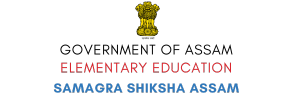
Vision
The vision of NIPUN AXOM is to create an enabling environment ensuring the universal acquisition of foundational literacy and numeracy so that every child achieves the desired learning competencies in reading with comprehension, writing and numeracy by the end of Grade 3, by 2026-27.
Components of NIPUN AXOM

Teaching Learning Materials
Teachers can make use of TLMs in a number of ways as mentioned below :
Use the existing materials, activities, worksheets, toys etc. for achieving pre-determined early learning outcomes
Create a print-rich classroom environment in the form of word walls, story books, etc. to help children develop literacy skills
Encourage children to read "written words" wherever available like newspaper, wall slogans, hoardings in school, advertisements etc.
Use indigenous/ locally available materials which are low cost or no-cost. Ensure that children can manipulate the materials & have safe accessibility
Design different areas like Reading Corner, Math Corner & Creative Corner to encourage free play, self-learning, socio-emotional learning, etc.
Teacher Professional Development

In view of the challenges of in-service teacher training across the different stages of school education, NCERT has designed an innovative and integrated programme for teacher training, now popularly known as NISHTHA (National Initiative for School Heads and Teachers Holistic Advancement).
One of the special features of NISHTHA is its interactivity with teachers. It provides teachers opportunities to not only share their concerns and problems with the Resource Persons but also to present solutions to these problems through their activities and presentations
NISHTHA 3.0 for NIPUN Bharat (Pre-primary to Class V)
NISHTHA 3.0 aims at achieving the major objectives of FLN based on the recommendations of NEP 2020. There are 12 courses covering the following topics:
Course 1: Introduction to FLN Mission
Course 2: Shifting towards Competency-based Education
Course 3: Understanding Learners: How Children Learn?
Course 4: Involvement of Parents and Communities for FLN
Course 5: Understanding 'Vidya Pravesh' and 'Balvatika'
Course 6: Foundational Literacy
Course 7: Multilingual Education in Primary Grades
Course 8: Learning Assessment
Course 9: Foundational Numeracy
Course 10: School Leadership for Foundational Literacy and Numeracy
Course 11: Integration of ICT in Teaching, Learning and Assessment
Course 12: Toy-based Pedagogy for Foundational stage
Every teacher and school headmasters will be expected to conduct action research to immediately solve problems related to foundational learning in the classrooms and will also develop low-cost innovative TLMs as follow-up activities of the capacity building programme. Face-to-face training will be conducted by the SCERTs at the state level.

DIKSHA (Digital Infrastructure for Knowledge Sharing) is the national digital platform for school education in India, an initiative of National Council of Educational Research and Training (NCERT) and Ministry of Education.
Vision
Continuous support to the teachers for their professional development through digital infrastructure to ensure desired learning outcomes in school education
How DIKSHA can improve children's FLN skills
Educational content will be aligned with the curriculum
Provide teaching-learning content in regional languages for FLN grades
.png)
Educational content will be learner- centered
Provide competency-based question banks and other assessment tools
Using DIKSHA to enable Teacher Professional Development
Defining training objectives
Stitching together courses on DIKSHA
Onboarding of teachers
Training the state support teams
Communication and outreach
Using DIKSHA to enable student learning
Examples of programmes adopted for student learning:
Energized Textbooks
Learn@Home
Quiz

Assessment
Assessment is vital in tracking children's progress in a continuous and comprehensive manner. It aims at early identification of learning gaps at each foundational stage i.e. at FYI-1, FYI-2, FYI-3, FYI-4, FYI-5 and FYI-6 including children with special needs, so that there can be possibilities of early intervention through referral.
Holistic and purposive assessments through different techniques help the stakeholders to :
Identify the child's strengths, needs, interests and preferences
Collaborate to solve issues and areas of concern
Potentiate the child's performance and scaffold it through interventions
Enable early identification of learning gaps and learning difficulties
NIPUN Bharat suggests two broad categories of assessments:
.jpg)
School-Based Assessment (SBA) by the teachers: for assessment of the individual child’s progress
Large-scale Achievement Survey: for assessment of the processes and functioning of the educational systems (such as NAS, SAS, and third-party assessments)

Teachers to conduct assessments in a number of ways including the ones provided below:
1.One of the important techniques of assessment during foundational learning is ‘observation’. It involves observing children on a continuous basis to understand their level of abilities, interests and learning styles
2.Based upon the observations, the teacher needs to plan for each learning area, tailoring it according to the learning needs and styles of the children
3.Test at least 10 items at two proficiency levels to measure each learning outcome of each subject for each grade for each child. Use backward and forward linkages of LOs to establish student proficiency.
Institutional Structures

A five-tier implementation mechanism for the mission is set up at the NATIONAL-STATE-DISTRICT-BLOCK-SCHOOL level





